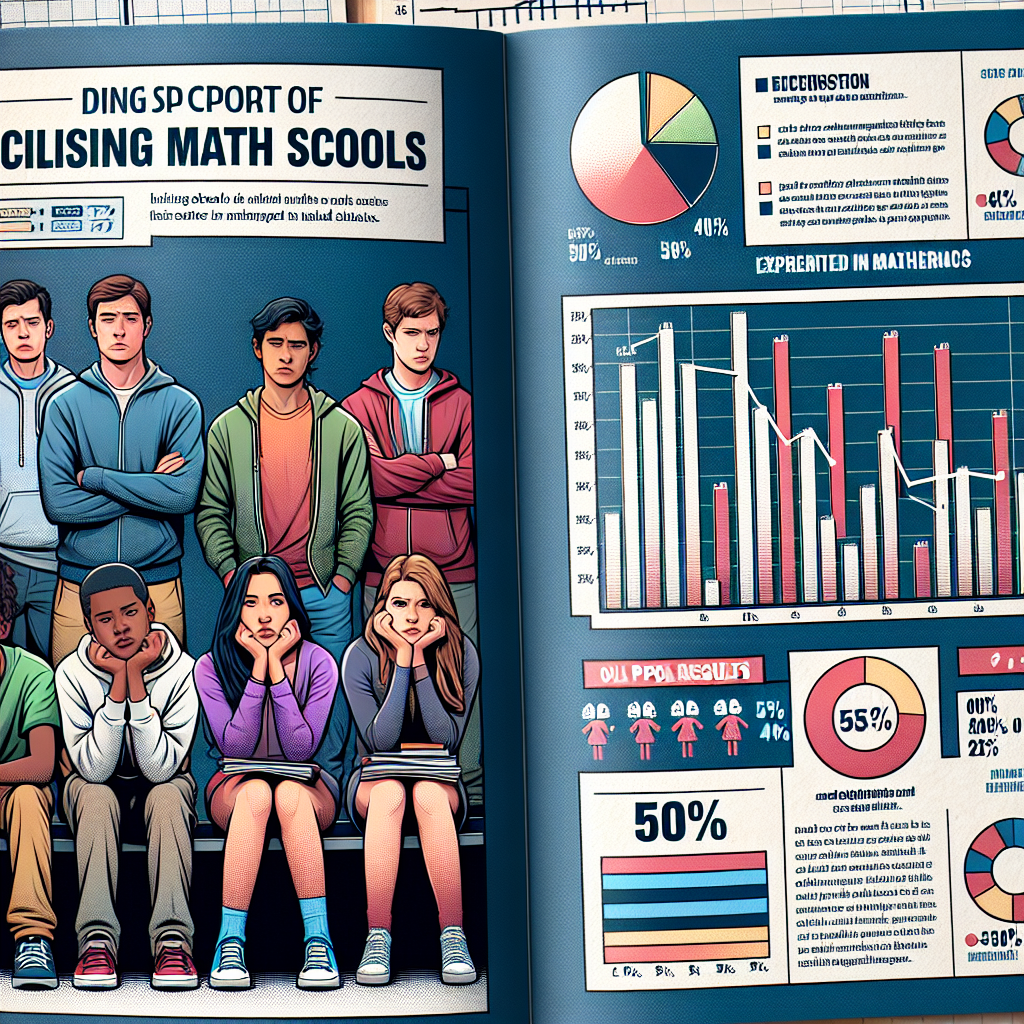A recent report by the RAND Corporation, a leading American think tank, has revealed a concerning trend of declining math scores among high school students in the United States. What’s even more worrying is that half of the students surveyed indicated a lack of interest in math classes and admitted to being distracted during lessons.
According to the National Assessment of Educational Progress (NAEP), the average math scores of eighth-grade students in 2024 were 8 points lower than those in 2019 (pre-COVID-19 pandemic). Furthermore, the performance of struggling students in math has worsened even compared to the year following the end of the pandemic in 2022. Since the COVID-19 outbreak, absenteeism rates among American students have significantly increased, impacting the recovery of academic performance.
The RAND Corporation’s research found that approximately half of middle and high school students expressed a lack of interest in math classes and admitted to being distracted for half or more of the class time.
Overall, 75% of students reported occasionally losing interest in math classes, with 10% stating that they were essentially zoning out for the entire duration of math lessons.
This lack of interest in math shows no significant differences across different grades, genders, races, or ethnicities. The survey revealed that 48% of students in grades 5 to 8 reported no interest in math classes, while 51% of students in grades 9 to 12 lacked interest in math. Additionally, the proportion of females disinterested in math classes was higher than that of males, at 53% and 45%, respectively.
In terms of ethnic backgrounds, 51% of Hispanic students expressed a dislike for math, followed by White students (47%) and African American students (44%).
Students who showed interest in math exhibited certain behaviors, such as understanding mathematical concepts, feeling supported in math classes, having confidence in their math abilities, enjoying math, believing in the importance of learning math, and being “math whizzes” (referring to students with excellent math skills and talent).
The survey revealed that a student’s personal enjoyment and comprehension of math are the two strongest factors in maintaining interest, while the relevance of believing in the necessity of learning math ranks lower.
Students commonly cited “boredom” as the main reason for finding math classes uninteresting.
While it’s typical for teenagers to express boredom, reports of classes being “boring” have been on the rise since 2008.
Students who find math classes boring tend to exhibit poor academic performance, lack of motivation, insufficient personal effort, and are at a higher risk of dropping out.
Students who are most prone to losing interest in class expressed a desire to reduce online learning and increase the practical application of math concepts in the classroom.
Online math activities often require students to work independently, lacking immediate feedback from teachers in this teaching mode, which can lead to fatigue and frustration among students. As a result, they are more likely to turn to social media or games online, exacerbating the perceived boredom of math classes.
Additionally, students feel that math content is disconnected from the real world, making it challenging to grasp the value of the curriculum, which in turn affects their level of engagement.
The majority of a student’s self-identity and confidence in math are formed during elementary school. Poor performance in early math learning may have a lasting impact on a student’s attitude towards math in middle and high school.
The report recommends that to enhance students’ engagement in math classes, educators should focus on supporting students, emphasize the value of math, integrate online and face-to-face teaching, and increase real-world applications.
The Trump administration aims to shift education rights from the federal level back to the states, believing that states are better positioned to tailor learning plans to meet the needs of their students.
According to data from the White House, the US Department of Education has invested over $3 trillion in education funding since 1979, with little discernible improvement. Despite a 2.45-fold increase in per-capita education spending, student performance has seen minimal quantifiable improvements. Here are some key education statistics:
– Mathematics and reading scores for 13-year-old teenagers are at their lowest levels in decades.
– 60% of fourth-grade students and nearly 75% of eighth-grade students are not proficient in math.
– 70% of fourth-grade and 70% of eighth-grade students are not proficient in reading, with 40% of fourth-grade students not even reaching basic reading levels.
– Standardized test scores for American students have remained unchanged for decades.
– Among 37 OECD member countries, US students rank 28th in math scores.

